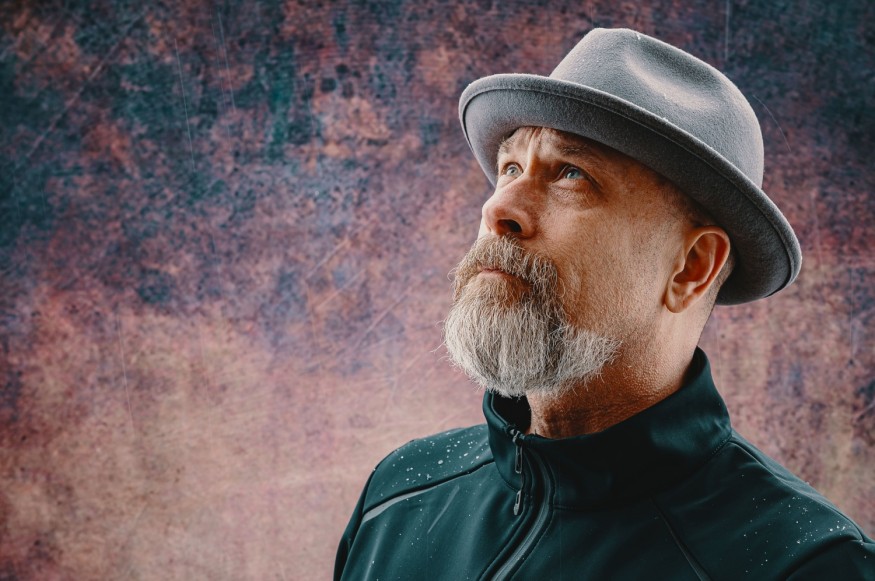Around half of the adult population is affected by dandruff, and it usually increases in magnitude about the age of 20. So what is Dandruff really, and how can you get rid of it? To find out how it is feasible to get rid of Dandruff with one bath, Express.co.uk talked to Dr. Rolanda Wilkerson, the Principal Scientist at Head & Shoulders.
Causes of Flaky Scalp
Dandruff comes in three forms:
- Malassezia globosa, a microbe present on everybody's scalp;
- Natural oil on the scalp known as sebum on the scalp; and
- Sensitive scalp
Dr. Wilkerson said oleic acid generates when Malassezia globosa breaks down the sebum on the scalp.
"If your scalp is sensitive to it - and around 50 percent of the world's population is - your scalp can become irritated, leading to the symptoms we know as dandruff."

How Common is Flaky Scalp?
For any point in their life, one in two persons in the country has suffered from Dandruff.
Dandruff usually begins with puberty. As you hit your 50s, it is less frequent.
"Dandruff often starts with puberty as your hormones start to change, causing you to produce more scalp oils for the dandruff-causing microbe Malassezia globosa to thrive on.
According to Dr. Wilkerson, a flaky scalp also happens when your hormones change as you grow old or during times of stress.
Is This Normal in Winter?
It's not because of the cold weather, whether you've found the Dandruff is worst in winter or just happens in winter.
Dr. Wilkerson said winter itself does not cause Dandruff.
Instead, other prevalent causes may render a current dandruff problem look greater in colder months.
For starters, dandruff-causing microbes flourish at higher temperatures because you're more at risk of Dandruff when you put on a wooly hat and increase the temperature of your scalp.
In reality, Head & Shoulders experiments have shown that for dandruff-causing microbes to survive, it does not take long to hit the optimum temperature.
"Central heating warms and dries the air surrounding you in households and workplaces.
"If you are susceptible to a dry, flaky scalp, the condition will get worse."
How Can You Get Rid of a Flaky Scalp?
Find out the type of dandruff you have
You need to realize what you are struggling with to handle what's going on on your scalp effectively. And to make things all the more confusing, there are technically three forms of Dandruff:
Psoriasis (large, itchy, red scales typically seen on your elbows, knees, and other body areas, as well).
If you suspect you have psoriasis, make sure you see a doctor for an exam. Psoriasis may not necessarily mean normal dandruff shampoos or therapies, but you may need to speak to a derm who will administer drugs that can improve.
Dry scalp (little white flakes that, without sticking, quickly fall off your hair and scalp)
Dominic Burg, trichologist and chief scientist at Evolis Specialist, told Cosmopolitan that dry-scalp flakes are very tiny and visibly dry. Try using a scalp-oil cream and calming scalp serum for a couple of weeks before you shave if you have a dry scalp. If your Dandruff only grows considerably worse or shows no signs of change, you're possibly struggling with.
Seborrheic dermatitis (yellowish sticky flakes are sometimes seen with a red, oily scalp; this form is called the classic form of Dandruff and is caused by the development of yeast from the scalp)
Burg notes, "Dandruff will also look sticky and shed like bigger particles, which are normally clumped together." To get rid of your Dandruff, start using an anti-dandruff shampoo every time you wash your hair - then switch it out with your usual shampoo once or twice a week when your symptoms diminish.
Here, the dandruff-fighting recipe you choose is supercritical since not all products can work the same. Please find the two Holy-Grail additives for dandruff remedies, zinc pyrithione, and ketoconazole, all of which function to destroy the excess yeast and fungi on your scalp (and the cute little flakes that come with it). Use a shampoo with salicylic acid that softly exfoliates the scalp and soothes some redness or inflammation for a lighter solution (or when the symptoms have died).
Find the Cause
David Kingsley, Ph.D., who has specialized in hair and scalp problems for more than 35 years, advises locating a source if you're feeling flaky for the first time. Keep aware of what you consume, note some unpleasant incidents, and vigilant of the environment's significant shifts.
First of all, Kingsley recommends checking at those potential causes, then if there is anything clear that stands out, focus on it. Bear in mind, however, that there's no assurance that the cure would be lasting and if you find out what's triggering or making the Dandruff worse. Kingsley notes that Dandruff does not necessarily go away immediately when you have one.
Scalp Scrub
It is no wonder that Dandruff does not get along with product aggregation (double the white flakes? uh, no, thank you). To tackle residual ingredients (think: dry shampoo, hair spray, the works) and extra grease, consider using a scalp scrub once a week. Note that you can use scalp scrubs super gently, massage the formula with your fingers (not your nails), and fully rinse it off before shampooing and conditioning.
Conclusion
It's crucial to note that there might not be a permanent cure until you embark on your dandruff-fighting trip. Certain people (and scalps) are only resistant to it. As long as you stick with the anti-dandruff shampoo and scalp scrub, a little relaxation can undoubtedly be found, if not a lot.
ALSO READ : Lack Of Sleep May Cause Dandruff, Study Says
Check out more news and information on Biology on Science Times.












